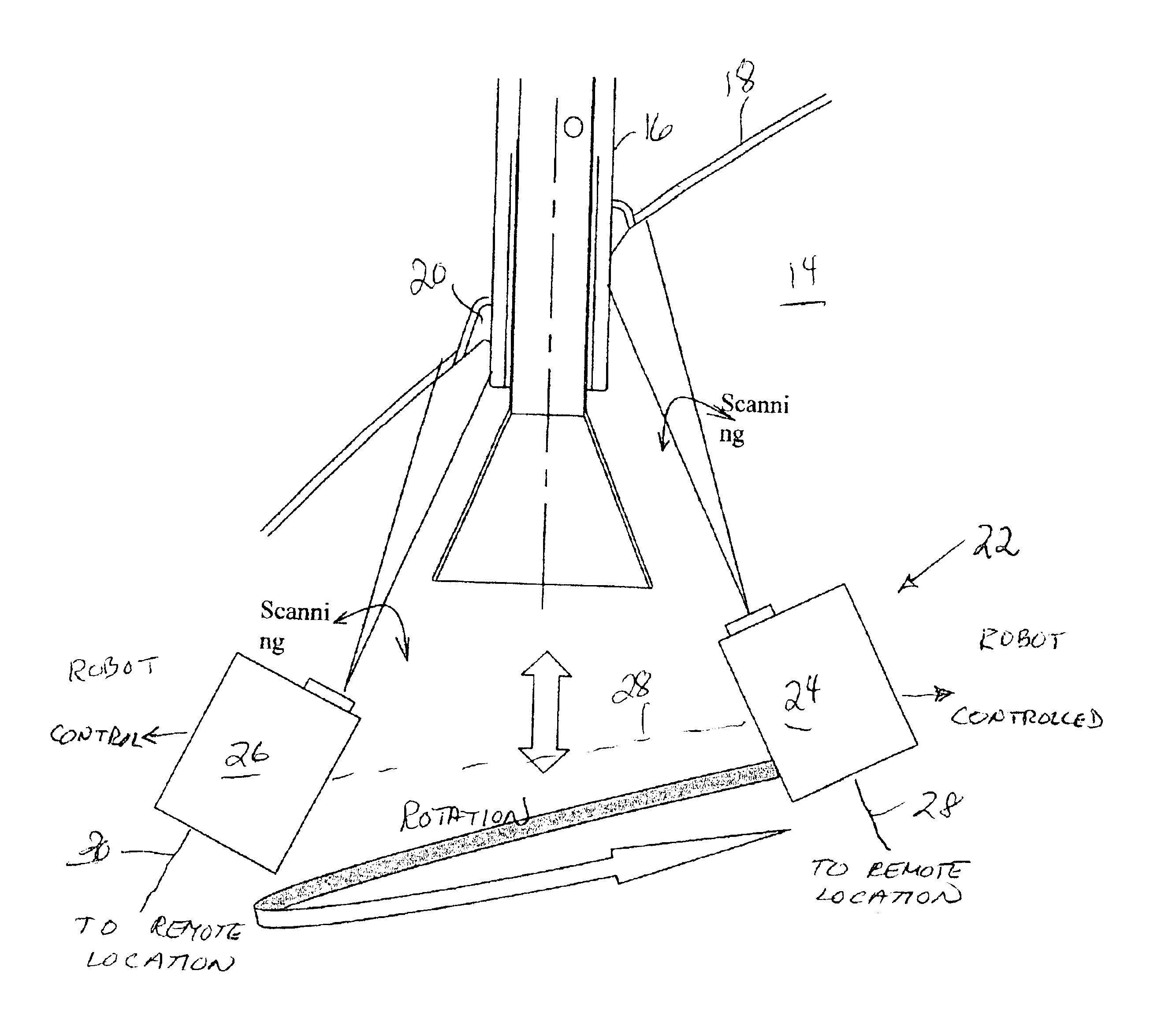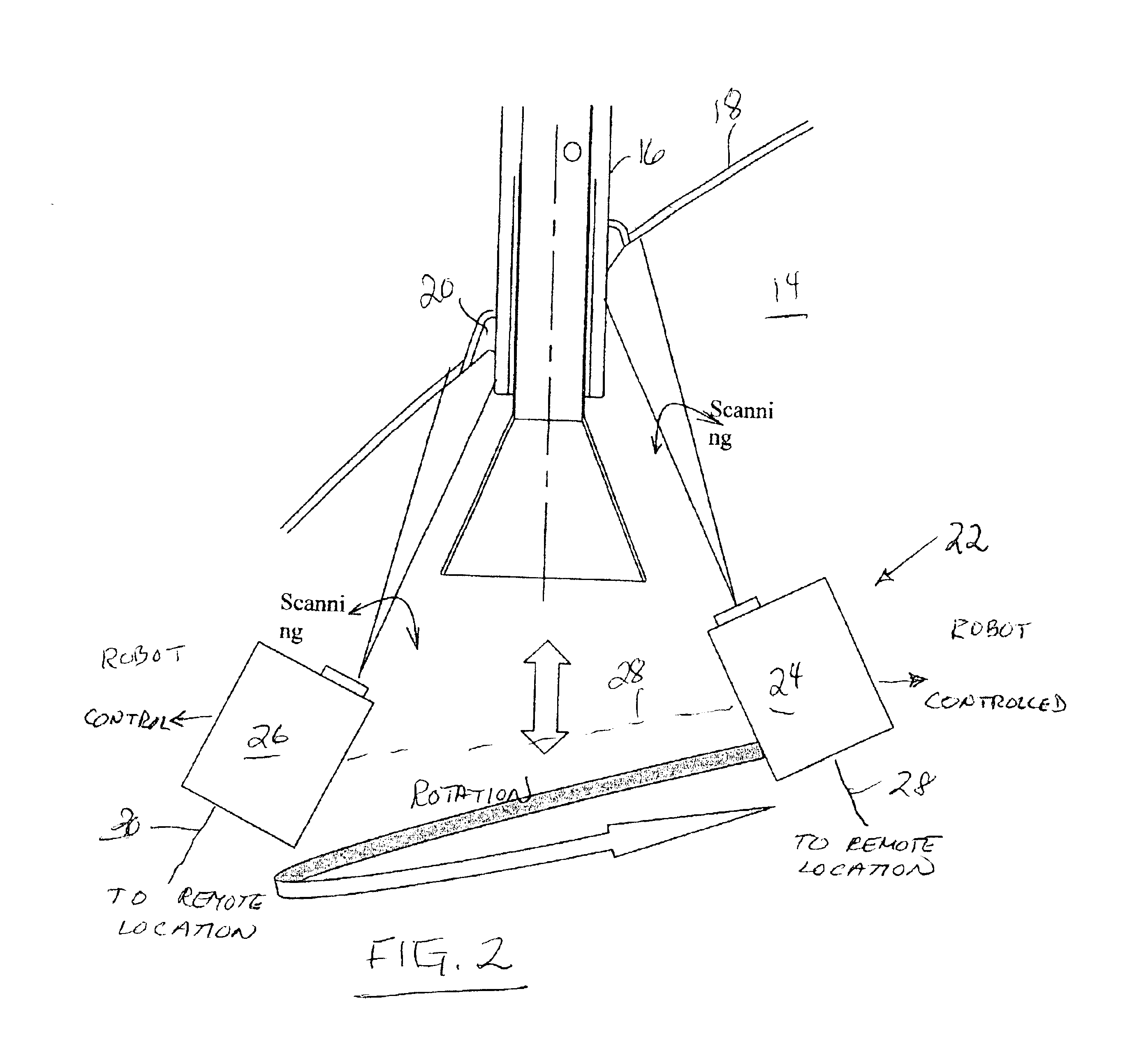Remote examination of reactor nozzle J-groove welds
a technology of remote inspection and welds, which is applied in the direction of instruments, nuclear elements, greenhouse gas reduction, etc., can solve the problems of difficult implementation of precise robotic manipulation, difficult to achieve, and failure to teach nuclear reactor weld checking techniques inside the reactor
- Summary
- Abstract
- Description
- Claims
- Application Information
AI Technical Summary
Benefits of technology
Problems solved by technology
Method used
Image
Examples
Embodiment Construction
Referring now to the drawings, FIGS. 1 and 2 show a known nuclear reactor head assembly (10) on its refuel parking stand (11) having a series of Inconnel 600 control rod drive tubes (16) extending through the dome (14) of the reactor head (10). The carbon steel dome is clad with approximately 0.5 in. of stainless steel (18). The tubes are welded to the clad head (10) by a known J-groove weld (20). Under some conditions, the J-groove welds must be 100% inspected for flaws during reactor refuel and maintenance outages. This testing is done from beneath (14) the reactor head (10) by known robotics such as the ARAMIS or ROCKY robot (15) connected to testing assembly (22) which rotates the assembly (22) around the J-groove weld (20) from a location remotely spaced there from but sill offering a view of the weld (20).
The weld detection assembly (22) is comprised of a laser (24) which is aimed at a predetermined area of the weld (20) from a distance of around 0.5 to 1.5 meters and heats th...
PUM
 Login to View More
Login to View More Abstract
Description
Claims
Application Information
 Login to View More
Login to View More - R&D
- Intellectual Property
- Life Sciences
- Materials
- Tech Scout
- Unparalleled Data Quality
- Higher Quality Content
- 60% Fewer Hallucinations
Browse by: Latest US Patents, China's latest patents, Technical Efficacy Thesaurus, Application Domain, Technology Topic, Popular Technical Reports.
© 2025 PatSnap. All rights reserved.Legal|Privacy policy|Modern Slavery Act Transparency Statement|Sitemap|About US| Contact US: help@patsnap.com



